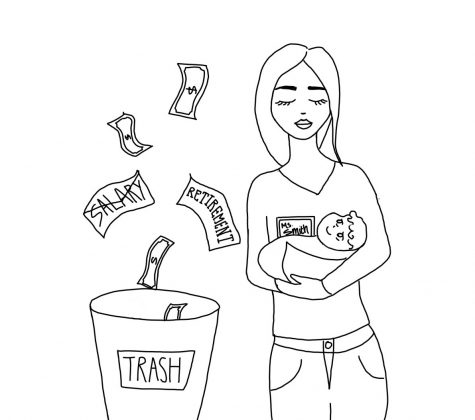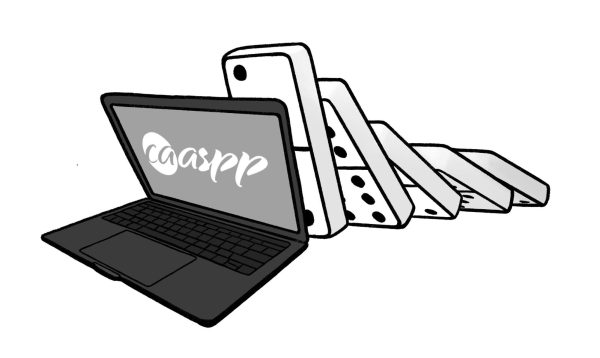Maternity leaves teachers falling victim to institutionalized sexism
March 31, 2020
A pregnant teacher waits until the last second to go on maternity leave and comes back to teaching as quickly as possible, even if it is just for the last week of school. Once the year comes to a close, she realizes that she was misinformed, and she still had not worked enough days for it to count as a year of working, causing her to lose her pay raise on top of her already lowered retirement fund. This is the reality for many teachers going on maternity leave, a reality that shows that the institutionalized system of maternity leave is full of inequity towards female teachers.

According to the Tamalpais Union High School District (TUHSD) website, Maternity Disability Leave is granted to all pregnant teachers. When a teacher first takes time off for maternity leave, she has to use all of the sick leave days that she hasn’t used yet while receiving full pay. After the teacher’s sick days have been expended, she gets 60 work days covered by the Family and Medical Leave Act (FMLA), which serves as a promise to the teacher that she will regain her job after returning to work. During this time, teachers receive differential pay, meaning their daily per diem rate or their salary, but with a deduction equivalent to the amount needed to pay for the substitute teacher. Once the days covered by FMLA end, the teacher can then take off more time by choosing to pay for Disability Insurance, and then she must return to school. Although these policies may seem fair, they work in a way that causes a decrease in salary and retirement funds, which only women have to deal with.
According to the TUHSD website, when teachers go on maternity leave, they must use all of their accumulated unused sick leave before taking time off using FMLA. This may not sound like an issue, but, as seen on Marin County Employees’ Retirement Association website, sick leave is a kind of accrual that counts towards retirement benefits. The more sick days accumulated upon retirement leads to a larger sum of money. Women who have to use up all of their sick days while on maternity leave in the education industry are far behind the men when retirement comes around.
Salaries and the number of years counted as being worked is another major issue in the maternity leave system for teachers. A teacher’s salary in TUHSD is based on the salary scale, which depends on the number of years worked. This means a teacher’s salary increases with the number of years worked. According to teachers who would like to remain anonymous, at Redwood, there have been miscommunications with Human Resources regarding the number of days needed for a year to count as being worked. 134 days are needed, but teachers are not being clearly informed of this by Human Resources. This issue not only impacts the teachers’ salaries and retirement benefits but also their status as an employee. This raises the question of whether or not Human Resources is doing enough to help teachers during their maternity leaves and whether this oversight is just another form of sexist discrimination.
Despite these inequities, however, last year, the maternity system did improve for teachers in some ways. Last year, a policy that considered sick days as workdays for anybody unless they were using them during maternity leave was repealed, meaning that sick days now count as workdays for teachers on maternity leave. Furthermore, now, pay during maternity leave cannot be less than half of the previous salaries despite pay deductions for a substitute teacher. Some may argue that after seeing these improvements, the discrimination was eliminated. However, teachers at Redwood remain concerned about the issue and how TUHSD Human Resources is handling it.
TUHSD should look to other industries to base their maternity leave systems on, many of which have more beneficial policies for the women on maternity leave. According to Business Insider, in the finance industry, Citigroup offers 16 weeks of paid time off and American Express gives 20 weeks. In the technology industry, Facebook gives its employees 16 weeks of paid time off, Twitter offers 20 weeks and Netflix offers an entire year off with full pay. TUHSD teachers only get 12 weeks off, and they only get full pay while on sick leave. For the rest of their leave, they get differential pay.
The institutionalized sexism that maternity leave policies create reflects the historical discrimination of working women who have been treated unfairly and penalized for having children. There has been a great deal of progress for women who want to both raise families and contribute to the workforce; however, there is still much work to be done. The policies regarding maternity leave need to change so that women no longer have to choose between nurturing their own children and earning a living.






















